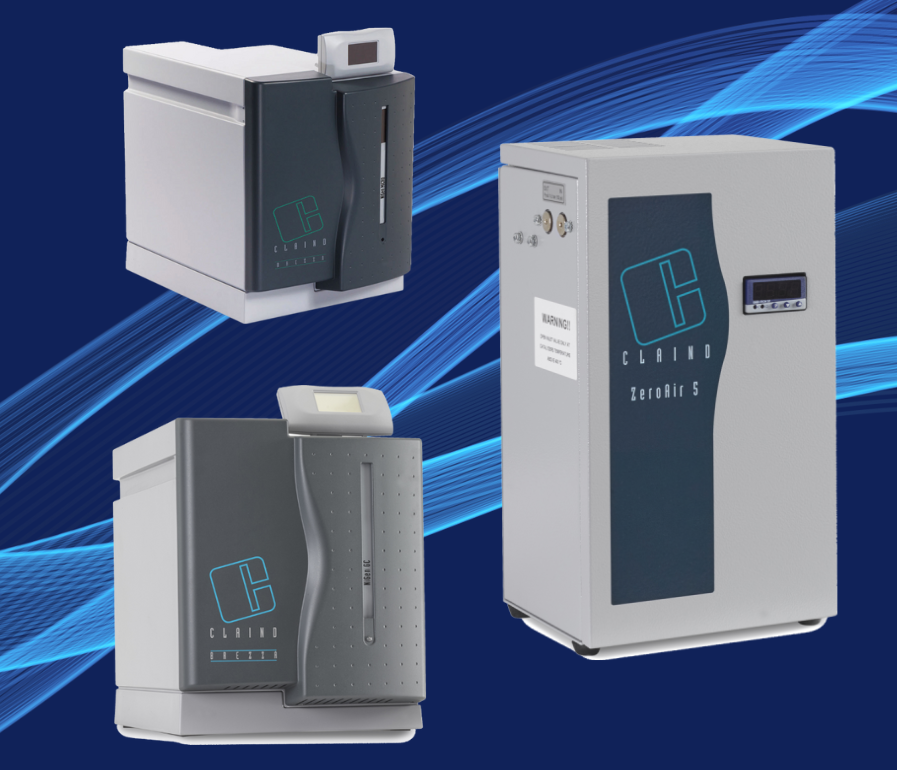New Products, Product Information
/ David Oliva
Zero air generators have become indispensable tools in modern analytical laboratories, providing a reliable source of ultra-pure air for various applications. Recent years have seen significant advancements in zero air generator technology, enhancing their performance, efficiency, and user experience. This blog post explores some of the latest innovations in this field.
→ Everything you need to know about zero air generators
Advanced Purification Methods
One of the most notable improvements in zero air generator technology is the development of more effective purification methods. New catalyst formulations have dramatically improved hydrocarbon removal efficiency while extending operational life. These advanced catalysts can now remove hydrocarbons to levels below 0.05 ppm, surpassing the capabilities of earlier models that typically achieved 0.1 ppm. This enhanced purification is particularly beneficial for sensitive analytical techniques like gas chromatography with flame ionization detection (GC-FID), where even trace hydrocarbon contamination can affect results.
Membrane technology has also seen significant advancements. Novel membrane materials now provide more effective moisture removal with lower pressure drops. This innovation not only improves the quality of the zero air produced but also enhances the overall energy efficiency of the generators. Some cutting-edge models incorporate hybrid systems that combine catalytic oxidation and pressure swing adsorption (PSA) technology. These hybrid systems yield higher purity levels and improved efficiency, offering laboratories a more comprehensive solution for their zero air needs.
Integration with Laboratory Information Management Systems (LIMS)
The integration of zero air generators with Laboratory Information Management Systems (LIMS) represents a significant leap forward in laboratory automation and data management. Modern zero air generators are increasingly designed with smart interfaces that allow seamless communication with LIMS. This integration offers several benefits to laboratories:
Real-time monitoring of generator performance and output quality is now possible, allowing lab managers to ensure consistent gas purity without manual checks. Automated record-keeping has become a standard feature, with maintenance schedules, purity levels, and usage data automatically logged. This not only saves time but also enhances traceability and compliance with regulatory requirements.
Perhaps most impressively, AI-driven systems can now predict when maintenance is required based on usage patterns and performance metrics. This predictive maintenance capability helps prevent unexpected downtime and ensures optimal performance of the zero air generator at all times. The integration with LIMS also allows for better resource optimization, enabling labs to plan gas usage across multiple instruments and experiments more efficiently.
Smart Features and Remote Monitoring Capabilities
The latest generation of zero air generators incorporates a range of smart features that significantly enhance usability and reliability. Many models now come equipped with user-friendly touchscreen interfaces, providing easy access to operational data and settings. This improvement in user interface design makes it simpler for lab personnel to monitor and control the generator's performance.
Remote monitoring capabilities have become increasingly sophisticated. Web-based interfaces and dedicated smartphone apps now allow users to check generator status and receive alerts from anywhere. This feature is particularly valuable for large laboratories or facilities with multiple sites, as it enables centralized monitoring and management of multiple units.
Advanced diagnostic algorithms have been implemented in some models, capable of detecting potential issues before they affect performance. These predictive diagnostics can alert users to upcoming maintenance needs or potential component failures, allowing for proactive maintenance and minimizing unexpected downtime.
Safety features have also been enhanced, with many models now incorporating auto-shutdown mechanisms. These systems can automatically shut down the generator in case of critical failures or emergencies, protecting both the equipment and laboratory personnel.
The advancements in zero air generator technology have significantly improved the capabilities, efficiency, and user-friendliness of these essential laboratory tools. From enhanced purification methods to smart features and LIMS integration, these innovations are helping laboratories achieve higher levels of accuracy, productivity, and compliance. As technology continues to evolve, we can expect further improvements in zero air generation, supporting the ever-increasing demands of analytical chemistry and related fields.
→ Up Next: Comparing Zero Air Generators to Compressed Gas Cylinders
